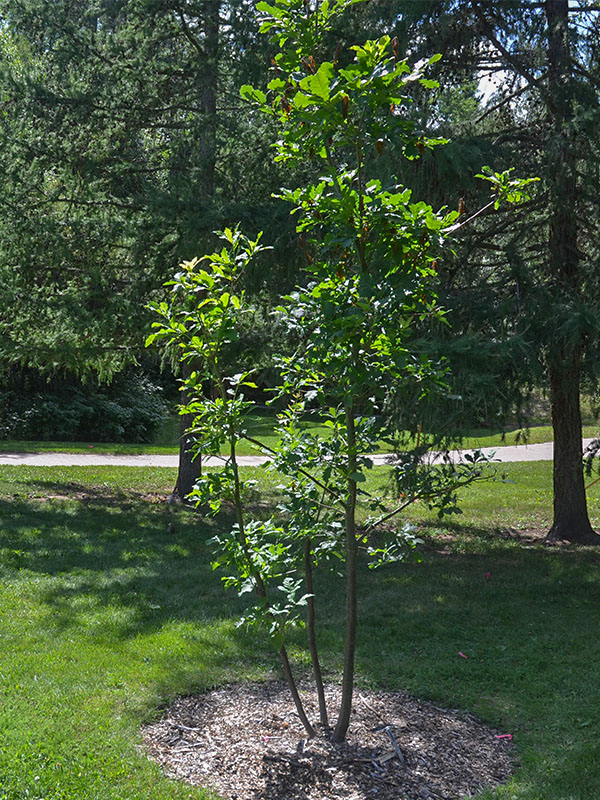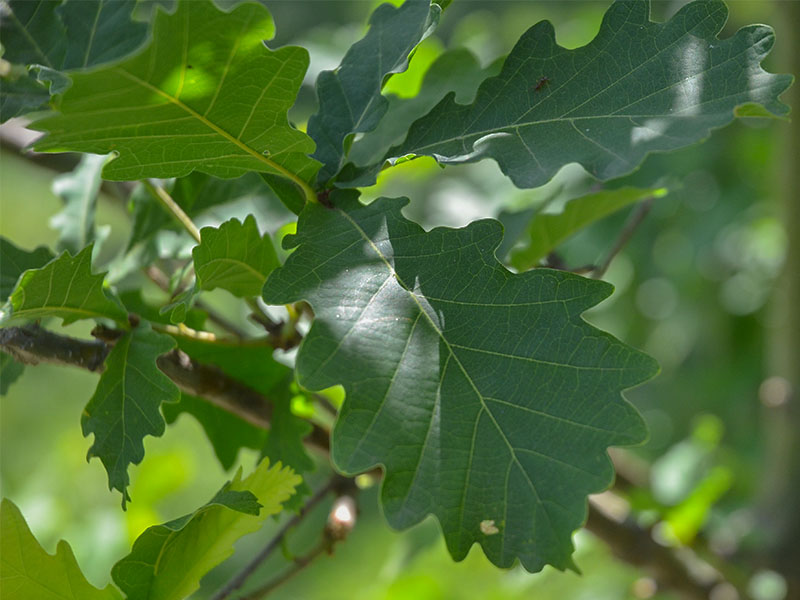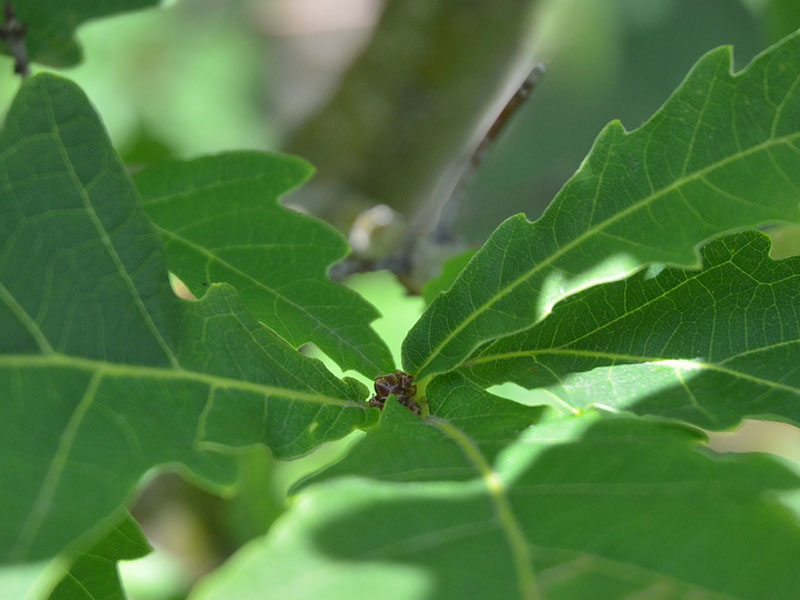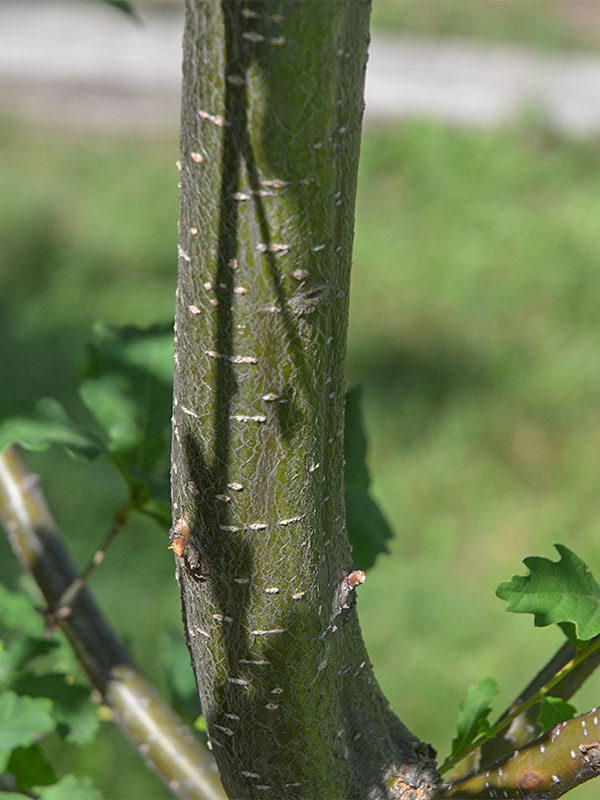| Shape | Upright reverse pyramidal. |
| Landscape | Shade tree, specimen or solitary accent tree. |
| Propagation | By seed. |
| Cultivation | Grow under full sun in rich, moist, well-drained sandy loam. |
| Pests | Borers, caterpillars, nut weevils, scale, oak skeletonizer, leaf miner, galls and oak lace bugs. May be susceptible to oak wilt, chestnut blight, shoestring root rot, anthracnose, oak leaf blister, cankers, leaf spots and powdery mildew. |
| Notable Specimens | University of Alberta Botanic Garden, Devon, Alberta, Canada. |
| Habitat | In Japan in cool forest and China at elevations of 200 - 2500 m in mixed mesophytic forests. |
| Bark/Stem Description | Smooth-to-rugged, notched, woody mature bark. New growth is smoother and more malleable. |
| Leaf Description | Obovate-oblong highly serrated leaves that grow in terminal clusters of 5 or more. 11 - 16 veins per leaf. |
| Flower Description | Non-showy monoecious flowers. |
| Fruit Description | Small ovoid acorns that measure just under 2 cm across. |
| Texture Description | Medium. |



